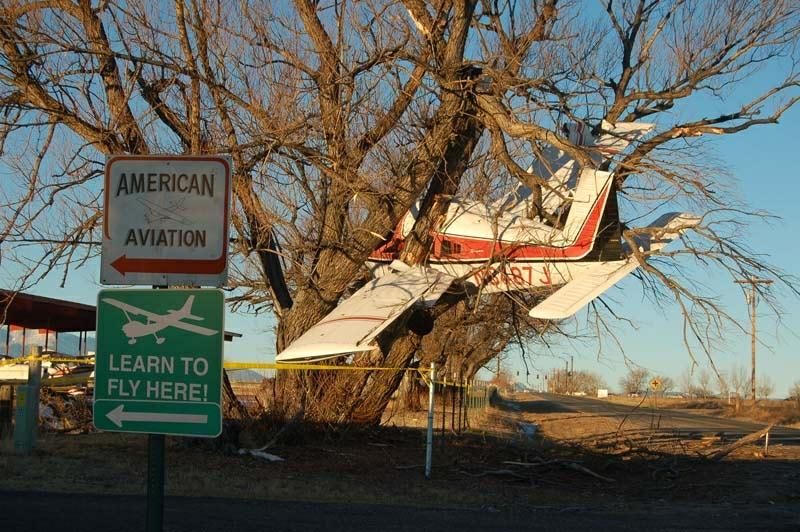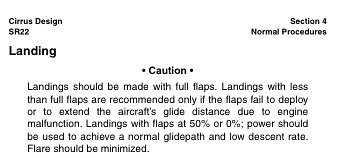I know one instructor that teaches students to go around if the stall horn goes off.
Ick.
As the above post notes, can't do that with every airplane. The Aztec has to have some power as I cross the fence and I was taught to "fly it on to the runway". Still need to pay attention to speeds to minimize energy on touchdown, but it's not the strangely satisfying stall warning touchdowns I could do in the various Cherokees.
Does the Aztec just set up too high a sink rate? I know a lot of twins do. The Seminole doesn't like power off landings either but you can just... barely... get away with them if you close the throttles and you're just a few feet off the ground or you're willing to accept that you have to flare HARD and at exactly the right time. And you'll usually miss the timing.
I've pulled it off a few times when high for a short field landing but it's a heck of a yank to keep it from slamming on. I'm going to guess the AzTruck sinks faster and the timing is even more critical and the pull even harder...? Which makes it "not worth it...".
Maybe some of them were practicing ILS or LPV approaches.
You break out at 200' on those. Slow down and land properly after you toss the hood. The excuse makes no sense.
Some teach like flying an ILS. Partial flap, power on. Thats ONE way. Good pilot should be able to do it every way.
True.
Yesterday a fellow posted a video to the AOPA forum on Facebook that made me cringe:
https://www.facebook.com/johnathon.tully/posts/10154776784496329
That poor nosewheel. If that's a rental the owner is going to be pleased with the upcoming bill. If it his, at least he'll be learning his own lesson.
The post by Machado yesterday of the taildragger landing where the pilot never even moved the flight controls after touching down in a crosswind was even more impressive as a "drive it into the runway and then freeze" video though. And a groundloop. I'm sitting there yelling at the screen... "rudder, rudder... RUDDER...AILERON..." ...wingtip strikes pavement. "Ughggnnnnngh!" I had to get up and leave my desk for a cup of coffee after watching that and the whole way to the break room I'm muttering "Why????" LOL.
Every time this topic comes up, there is a paucity of evidence provided which shows there is any harm from a flat, or power-on approach.
Until someone shows actual harm from a particular method, it is going to be difficult to support changing it.
Show us some statistics! Otherwise, one may be led to believe it is all unsupported pilot opinion.
Same with 'most engine failures occur when the throttle/prop is adjusted'. No proof, or even substantiated anecdote.
The nosewheel in the video above is one solid reason. It'll harm the whole nosewheel assembly and wear it out early. Not that renters care much... but if you're paying, you'll fix your fast landings and beating up your nosegear ince you get that bill. Notice also in the video he's trying to hold ceterline and skidding the chattering and bouncing tire sideways multiple times. A hole in that tire could mean a little fun in the weeds next to the runway pretty easily which would demonstrate why the technique was poor.
You test your idle at run-up, right?
If it won't idle, it's not safe for flight.
If I fly from here to Leadville and use the checklist "full rich" for takeoff here and push it "full rich" again up there and pull the carb heat out...
Nothing mis-configured in the carb at all. Just a DA change.
I've also flown a 172 A model that idled fine during the idle check but still stalled on final about ten feet in the air with carb heat on.
It actually had a carb problem, but the idle check -- most don't have you pull carb heat on, because sucking unfiltered air on the ground is bad in some conditions -- passed fine pre-flight.
I was pretty low time at the time and had another low time friend along and after I pushed the nose down and then flared and landed it, we taxied off and looked at each other and said, "well, that was different!" It was his airplane and it needed work. He'd never had it happen. So of course it had to happen to me with him on board. LOL.



